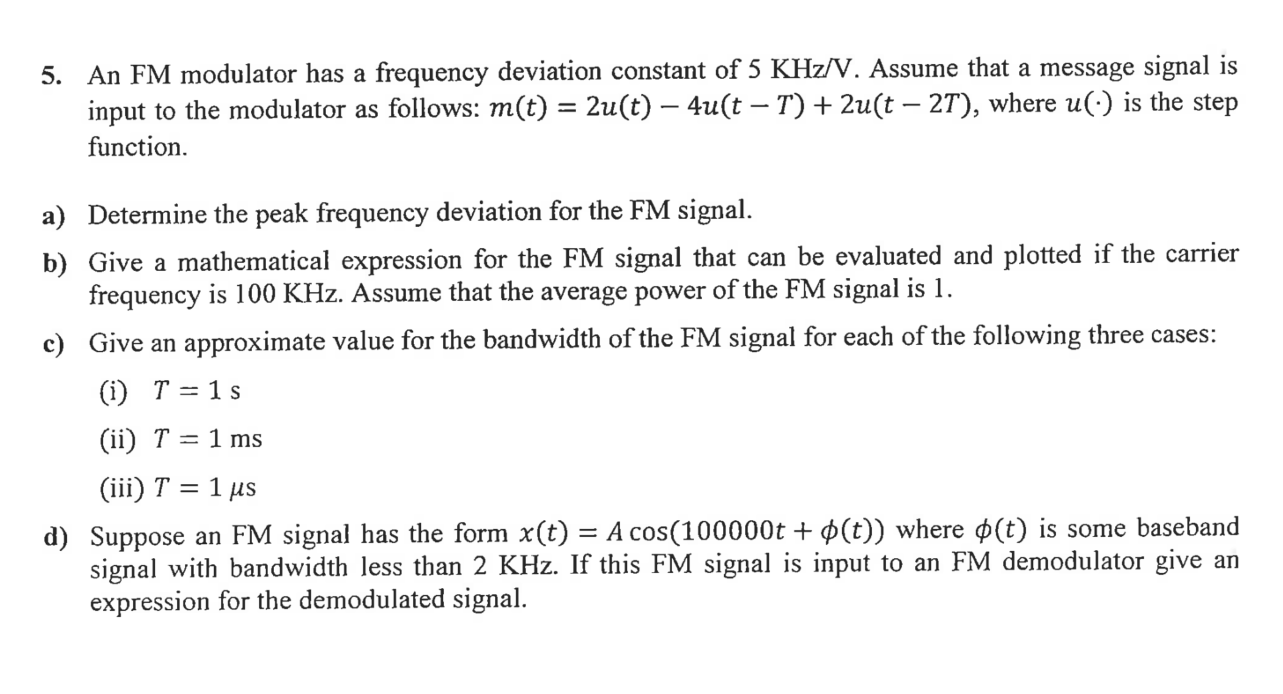Home /
Expert Answers /
Electrical Engineering /
5-an-fm-modulator-has-a-frequency-deviation-constant-of-5khz-v-assume-that-a-message-signal-is-in-pa348
(Solved): 5. An FM modulator has a frequency deviation constant of 5KHz/V. Assume that a message signal is in ...

5. An FM modulator has a frequency deviation constant of . Assume that a message signal is input to the modulator as follows: , where is the step function. a) Determine the peak frequency deviation for the FM signal. b) Give a mathematical expression for the FM signal that can be evaluated and plotted if the carrier frequency is . Assume that the average power of the FM signal is 1. c) Give an approximate value for the bandwidth of the FM signal for each of the following three cases: (i) (ii) (iii) d) Suppose an FM signal has the form where is some baseband signal with bandwidth less than . If this signal is input to an demodulator give an expression for the demodulated signal.
Expert Answer
a) The peak frequency deviation for an FM signal can be determined using the formula: ?f = ? × A_max where ?f is the peak frequency deviation, ? is the frequency deviation constant, and A_max is the maximum amplitude of the message signal. In this case, the frequency deviation constant is given as 5 kHz/V. The maximum amplitude of the message signal can be determined by evaluating the given expression m(t) at t = 0, which gives: m(0) = 2u(0) - 4u(-T) + 2u(-2T) = 2 - 4(0) + 2(0) = 2 Therefore, A_max = 2. Substituting the values into the formula, we have: ?f = 5 kHz/V × 2 = 10 kHz So, the peak frequency deviation for the FM signal is 10 kHz. b) The mathematical expression for the FM signal can be given by: s(t) = Acos(2?f_c t + ??m(?)d?) where s(t) is the FM signal, A is the amplitude of the FM signal, f_c is the carrier frequency, ? is the frequency deviation constant, and m(t) is the message signal. In this case, the carrier frequency is given as 100 kHz, and the message signal is m(t) = 2u(t) - 4u(t - T) + 2u(t - 2T). Substituting the values into the expression, we have: s(t) =